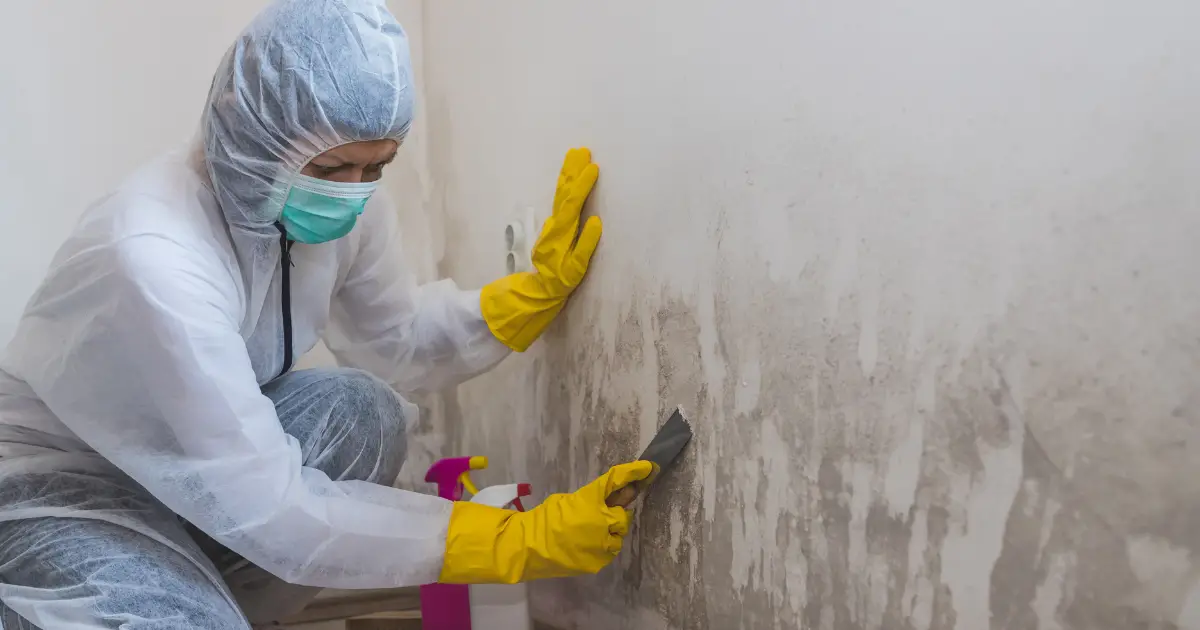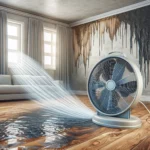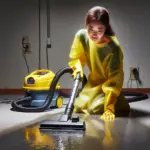After water damage remediation, your home has been dried, cleaned, and seemingly restored to its previous state. But what truly lies ahead? What happens after water damage remediation? This isn’t just about drying out and moving on—ensuring the health and safety of your living space is paramount. The meticulous journey includes verification inspections, addressing potential structural issues, remediating mold, improving air quality, and finalizing reconstruction efforts. You’ll also navigate the intricacies of insurance claims to solidify your home’s recovery. Our guide demystifies the critical steps and considerations following water damage remediation, preparing you for what to expect and how to act in your home’s best interest.
Key Takeaways
-
The post-remediation inspection is critical to ensuring a property is thoroughly dried and free of contaminants, using tools such as moisture meters and air quality tests to detect any remaining issues, including mold.
-
Reconstruction and restoration after water damage is a multifaceted process, focusing on the repair of structural damage, a restoration of aesthetic elements, and a final walkthrough with homeowners to confirm satisfaction.
-
Dealing with insurance claims is a complex but essential aspect of water damage recovery, involving documentation of damages, navigating the claims process, and understanding policy coverage and payouts.
Post-Remediation Inspection and Verification
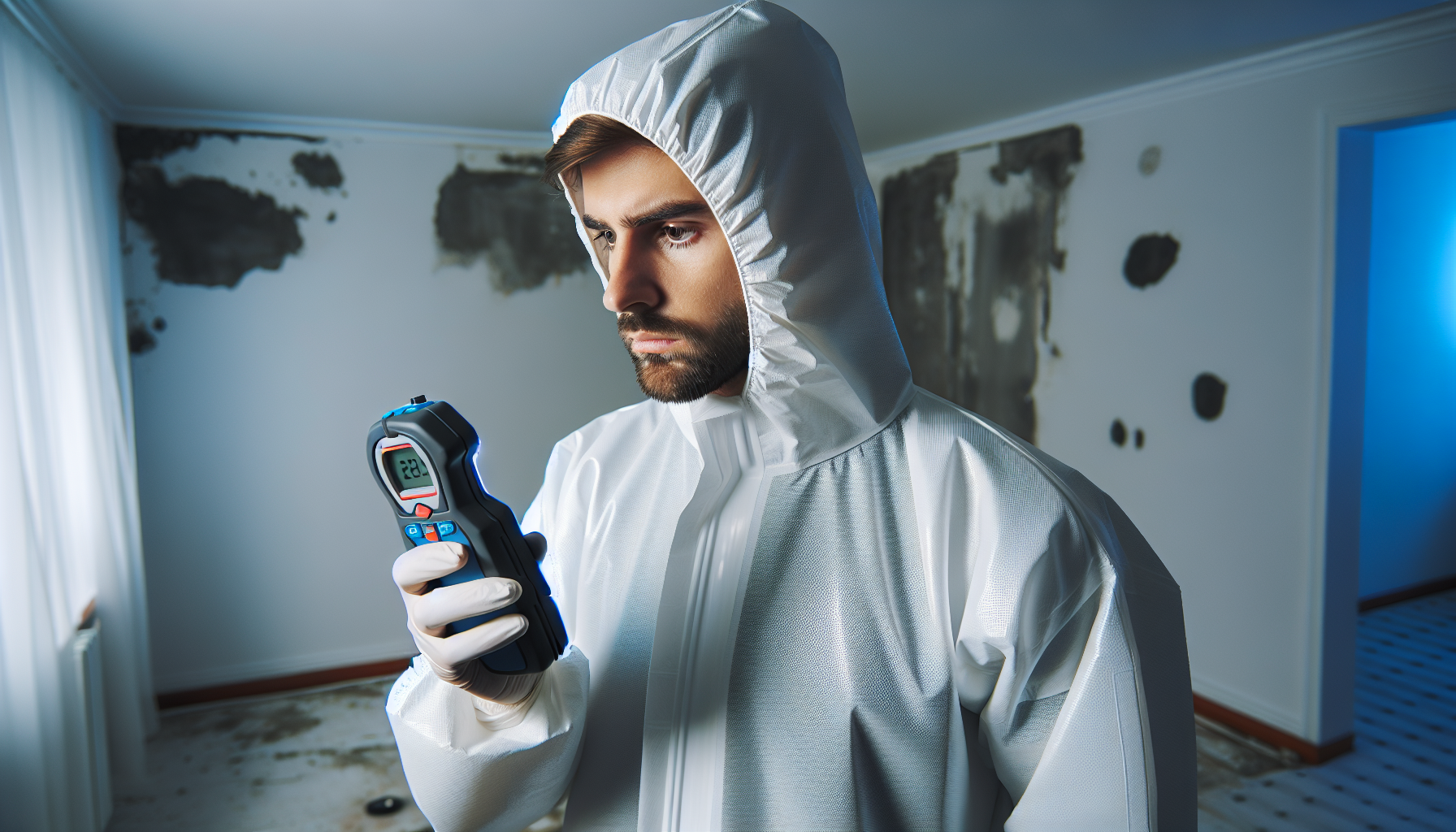
Surviving the initial shock of water damage and the ensuing chaos is an achievement in itself. But the journey doesn’t end there. Your next step is a thorough post-remediation inspection. This inspection serves as a safety net, ensuring that all issues, like mold growth and inadequate drying, are resolved after the water damage remediation process. You wouldn’t want the laborious work of remediation to be in vain, would you?
The inspection process is a meticulous one. It involves visual examinations, detailed moisture measurements, and air sampling to ensure that your property is free of moisture and contaminants. It’s akin to a security sweep where every nook and cranny is examined to guarantee that your haven is safe again. This is the stage where a reputable remediation company steps in to ensure proper mold removal and adequate drying, thereby preventing future issues.
So, when you’re dealing with the aftermath of flood water damage, always remember – vigilance is the key.
Confirming Dryness and Stability
You may wonder how professionals confirm the dryness and stability of your home after the water damage remediation process. That’s where a suite of specialized tools come into play. Some of these tools include:
-
Moisture meters
-
Infrared cameras
-
Hygrometers
-
Thermal imaging devices
These tools are used to confirm that the affected area is dry. It’s like performing a health check for your home, where the pulse is the moisture content.
These tools include:
-
Pinless and pin-type moisture meters, which give initial readings and more precise moisture content readings, respectively
-
Infrared cameras, which come in handy to establish the initial wet and dry areas
-
Thermo-hygrometers, which record ambient condition readings critical for determining structural stability during the drying process
This arsenal of tools ensures that your home, once a victim of water damage, is now a fortress of stability and dryness.
Checking for Residual Mold and Mildew
Imagine surviving a flood, only to fall prey to an invisible enemy – mold. Mold spores can grow almost anywhere with warmth and moisture and can lead to new infestations if not removed. For this reason, mold remediation and post-remediation mold testing are integral parts of the water damage restoration process.
Inspecting areas like basements, closets, and pantries is a must, as they are often the breeding grounds for mold. Mold detection techniques include:
-
Air quality tests
-
Spore traps
-
Petri dish analysis
-
Visual signs like fuzzy splotches on walls or damp areas on carpets
So, while water damage might seem like a visible enemy, remember to look out for the invisible culprits too, as they can cause further damage!
Ensuring Air Quality
Breathing easy after dealing with water damage might seem metaphorical. However, it is literally imperative to ensure high-quality indoor air circulation after such an ordeal. Specialized filtration devices like air scrubbers and negative air machines come to the rescue here. They are like the superheroes of air quality, diligently maintaining your indoor air’s sanctity.
Air scrubbers and air movers utilize a multi-stage filtration process, including high efficiency particulate air (HEPA) and carbon filters, while negative air machines create negative air pressure to prevent the spread of contaminants. These devices can remove up to 99.97% of harmful particles, including those resulting from water damage and mold. So, while you’re dealing with the aftermath of water damage, remember to breathe easy, literally!
Reconstruction and Restoration of Damaged Areas
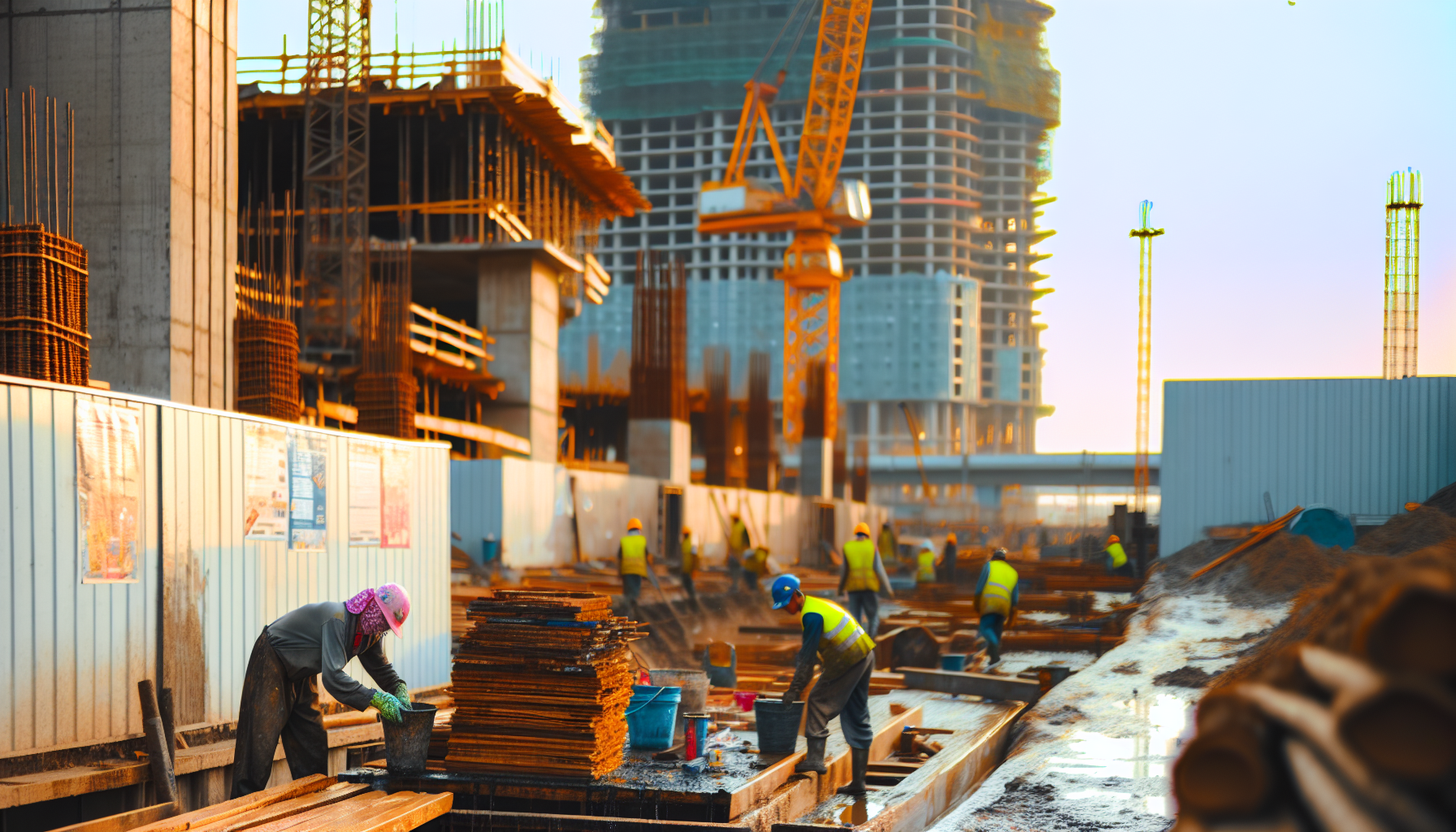
Following the inspection, the water damage restoration process progresses to the stage of reconstruction and restoration. It’s like giving your home a second chance at life. This stage necessitates the replacement of wet materials and the rebuilding of compromised building structures. Ensuring the restored property is safe and habitable for its occupants is of utmost importance.
Rebuilding after water damage can be a journey in itself. The time it takes to complete the reconstruction can vary from four months to a year. This will depend on the extent of the damage that needs to be repaired. Remember, Rome wasn’t built in a day, and your restored home will be worth the wait!
Repairing Structural Damage
Water-induced structural damage can be a homeowner’s worst nightmare. The risks of wall, ceiling, and floor collapse necessitate urgent action from a water damage restoration company. You can liken it to performing life-saving surgery for your home, with the restoration process serving as the scalpel.
The repair process involves:
-
Removing unrecoverable parts
-
Performing flood cuts to prevent mold
-
Replacing or reinforcing severe damage to structural components to ensure the building’s safety and stability
-
Using specialized equipment and water-resistant materials to prevent future issues with water and mold
So, when it comes to repairing structural damage, remember – it’s all about strength and resilience in the choice of building materials.
Restoring Aesthetics
While structural restoration ensures your home is safe, restoring aesthetics ensures it feels like home. It’s like healing the visible wounds left by water damage.
This restoration might involve repairing or replacing wall coverings, trim boards, and other aesthetic fixtures damaged by water. Restoring or refinishing furniture may involve drying, refinishing, or reupholstering to address issues like warping or splitting. Carpets may need deep cleaning or complete replacement if they are not salvageable.
So, while restoring the aesthetics of your home after water damage, remember – it’s all about creating a space that feels like home again.
Final Walkthrough with Homeowners
The final phase of water damage restoration is the final walkthrough. This is a critical stage ensuring homeowners are satisfied with the work completed. It’s like the final exam, where the passing grade is your satisfaction.
During the walkthrough, homeowners participate in a detailed inspection to verify that all agreed-upon repairs have been finalized to their satisfaction. They have the chance to express any concerns about the workmanship or materials used. If needed, minor adjustments or touch-ups are addressed during the final walkthrough.
So, when you’re doing the final walkthrough, remember – your satisfaction is the final goal.
Handling Insurance Claims and Documentation
Dealing with insurance claims and documentation can seem like a daunting task amidst the chaos of water damage. However, this step is a vital part of the journey towards restoration. This process involves:
-
Contacting your insurance company
-
Documenting damages
-
Understanding policy terms
-
Maintaining records of interactions
Think of it as navigating a maze, where the treasure at the end is a successful insurance claim.
Creating a detailed list of damaged items and providing photographic evidence is essential before cleanup or repair work begins. Keeping all damaged items until the insurance claim is fully settled is important, as they may need to be inspected by insurance adjusters. Understanding your insurance policy’s terms, like knowing the limits and deductible, is crucial before filing a water damage claim. So, when you’re handling insurance claims and documentation, remember – diligence is the key.
Navigating the Claims Process
Navigating the claims process can sometimes be as complex as navigating a ship through stormy seas. But with the right guidance, you can steer your way to a successful claim.
Contacting your insurance company immediately after water damage is vital. Providing all necessary information can expedite the claims process and improve the chances of an adequate settlement. Following up regularly with the insurance company ensures the claim is being processed. Honesty in reporting is crucial to avoid delays or claim issues. You might also find yourself negotiating with the insurance company for an adequate payout. In such cases, a public adjuster can advocate on your behalf.
So, when you’re navigating the claims process, remember – it’s all about steering your ship with precision.
Documenting the Work Completed
After the completion of repairs, the importance of documenting the work completed cannot be overstated. It’s like keeping a detailed diary of your home’s journey from devastation to restoration.
A certificate of completion is provided as documentation often required for insurance claims. Detailed records of the remediation process, including dates, descriptions of work, and the names of involved contractors or professionals, should be kept. Photographs should be taken, and documentation should be maintained for each item affected by water damage. All financial documentation relevant to the water damage restoration must be retained to facilitate interactions with insurance companies. So, when you’re documenting the work completed, remember – every detail counts.
Understanding Coverage and Payouts
Understanding coverage and payouts is a critical part of dealing with water damage. You can liken it to understanding the rules of a game before you commence.
Homeowners’ insurance policies typically cover sudden or accidental water damages, but not gradual damages, negligence, or flood-related issues. Insurance claims for water damage may be settled based on the actual cash value or replacement cost value, directly affecting the payout amount. The claims payout process can involve a depreciation holdback, requiring proof of completed repairs for the full sum.
Following a major water damage claim, homeowners should be aware that their insurance policy may not be renewed. So, when you’re understanding coverage and payouts, remember – knowledge is power.
Returning to Normalcy: Reintegrating Your Personal Belongings

Returning to normalcy after experiencing the process of water damage is like finding calm after a storm. This process involves cleaning and disinfecting household items, reintegrating personal belongings, and handling the emotional considerations that accompany it.
Cleaning and disinfecting household items is vital to prevent the spread of pathogens carried by floodwater. For hard surfaces, a solution of household ammonia and trisodium phosphate can be used. A diluted chlorine bleach solution serves as a disinfectant for washing down carpets and furniture safely. So, when you’re reintegrating your personal belongings, remember – cleanliness is the first step towards normalcy.
The Pack Back Process
You can liken the pack back process to reassembling a puzzle. Here’s how it works:
-
Salvageable contents are carefully packed.
-
They are moved to a secure location.
-
The contents are restored to their pre-loss condition.
-
After the items are restored and home repairs are completed, the restoration company will return the contents to the homeowner.
Reviving smaller decorative elements includes dry cleaning or professionally laundering soaked fabrics to pull excess moisture and prevent mold. However, the pack back process can be emotionally difficult for homeowners, as it involves sorting through personal belongings and potentially losing items of sentimental value. So, when you’re going through the pack back process, remember – it’s all about putting the pieces back together.
Assessing Non-Salvageable Items
Evaluating non-salvageable items forms a critical part of addressing water damage. It’s like separating the wheat from the chaff. The type of water involved in the damage determines if items can be salvaged, due to varying levels of contamination and resulting health risks.
Porosity of materials is a key factor in salvageability, where porous items, when water-saturated, often cannot be restored. Mold and mildew presence signifies that the salvageability of items needs careful evaluation. So, when you’re assessing non-salvageable items, including asbestos containing materials, remember – it’s all about making informed decisions.
Emotional Considerations and Support
Dealing with the emotional aftermath of water damage can be challenging. Individuals may experience a range of emotions, including:
-
Sadness
-
Loneliness
-
Overwhelm
-
Difficulty making decisions
-
Feeling physically and mentally drained
Children affected by water damage may also display regressive behaviors and act out more frequently. It’s important to provide support and understanding during this time.
Strategies to cope with water damage stress include:
-
Focusing on safety
-
Maintaining a healthy lifestyle
-
Seeking social support
-
Being patient
-
Staying positive
Reaching out for assistance is encouraged, as resources are available for individuals and families to cope with the emotional aftermath of water damage. So, when you’re dealing with the emotional considerations of water damage, remember – it’s okay to seek help.
Long-Term Maintenance and Prevention Strategies
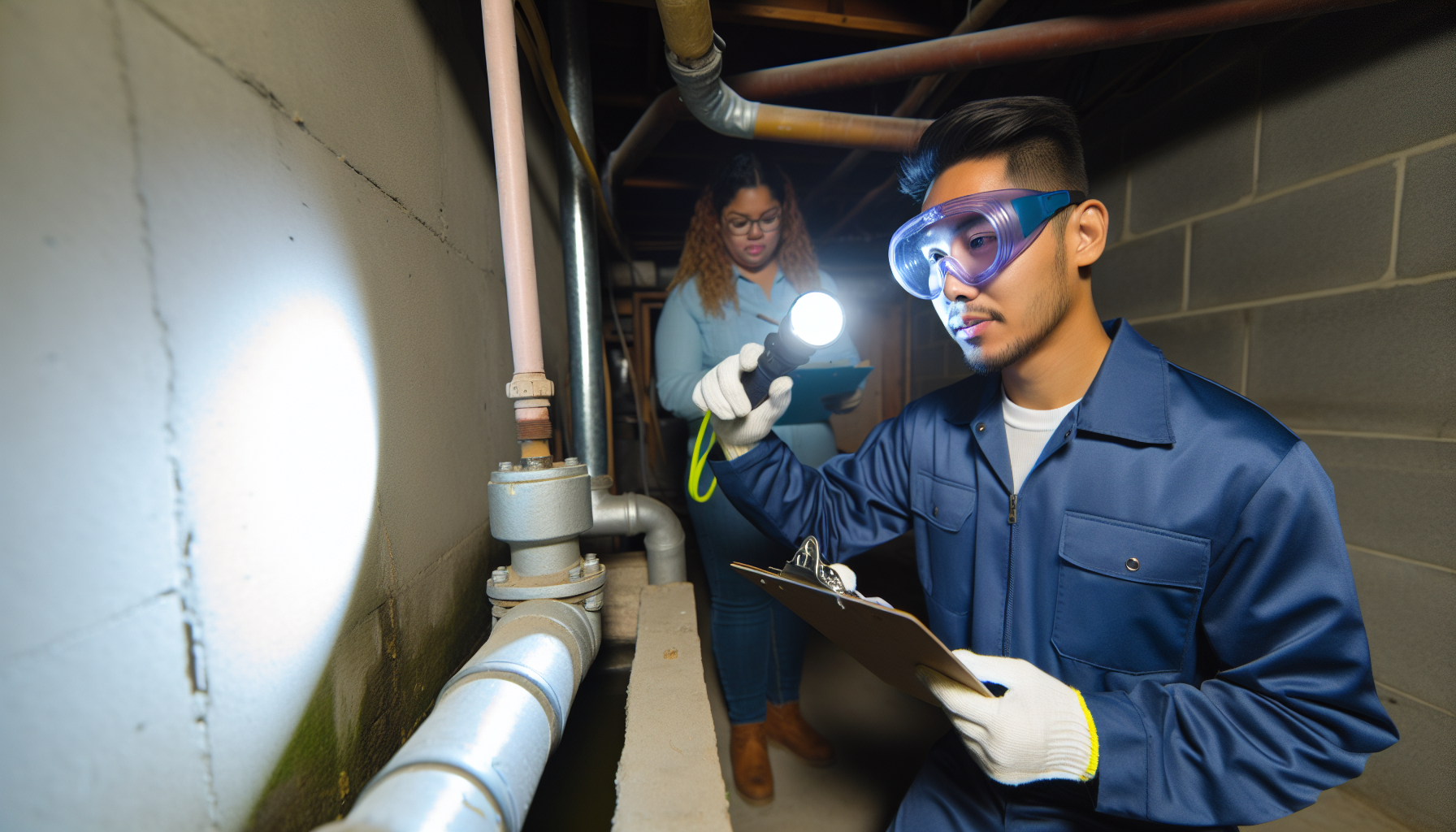
Consider long-term maintenance and prevention strategies as shields that protect your home from future water damage. Some key strategies to consider include:
-
Routine plumbing maintenance
-
Installing backwater prevention valves
-
Maintaining gutters
-
Regular inspections
Implementing these strategies, including water mitigation, will help ensure the long-term protection of your home against water damage.
Some proactive steps to control water flow and prevent basement flooding include:
-
Maintaining gutters
-
Installing gutter extensions
-
Sealing cracks in foundations
-
Ensuring proper grading
Regular maintenance, testing, and having a backup power source for sump pumps are also critical, especially during heavy rainfall, to manage water buildup. So, when you’re focusing on long-term maintenance and prevention strategies, remember – prevention is better than cure.
Regular Inspections for Early Detection
Conducting regular inspections for early detection is akin to playing detective in your own home. Infrared technology and moisture meters are used for the detection of high humidity areas, which could be indicative of leaks or standing water.
Conducting regular plumbing inspections can reveal early warning signs, such as small leaks or pipe weaknesses, allowing for interventions before these issues escalate into major water damage or a burst pipe. So, when you’re conducting regular inspections for early detection, remember – every clue counts.
Implementing Preventative Measures
Consider implementing preventative measures as building a fortress around your home. The choice of materials and finishes for restoration is often based on their durability and ability to resist moisture, diminishing the risk of subsequent water damage. Using moisture sensors can provide timely alerts about high humidity levels, mitigating unseen water damage risks.
Proactive measures such as cleaning gutters, switching off the main water supply when away, and potentially using a sump pump in flood-prone areas are actions that can prevent natural flooding and sewer backups. So, when you’re implementing preventative measures, remember – a stitch in time saves nine.
Educating on Flood Insurance Benefits
Understanding flood insurance benefits can be likened to grasping the rules of a safety net. Flood insurance is available to homeowners, renters, and business owners nationwide, regardless of their location in high-risk flood zones, providing coverage options for a wide audience.
Flood insurance significantly reduces the financial risk for homeowners, facilitating a quicker recovery from flood events. With an inch of flooding potentially costing more than $25,000, flood insurance plays a crucial role in protecting homeowners from severe financial impact. So, when you’re educating yourself about flood insurance benefits, remember – knowledge is your safety net.
Summary
This comprehensive guide has taken you on a journey through the aftermath of water damage. From the importance of post-remediation inspection, the reconstruction and restoration of damaged areas, the critical role of insurance claims and documentation, to the emotional considerations and support needed in reintegrating personal belongings, the process is undoubtedly complex. But with the right information, preventive measures, and a keen understanding of your situation, you can navigate this challenging period and return to a sense of normalcy. Remember, every storm is followed by a rainbow!
Frequently Asked Questions
How long does it take to dry out walls from water damage?
It typically takes about five days for walls exposed to water or moisture to dry, but the duration can vary based on different factors. The drying process can range from as little as two days to several weeks.
What should I do immediately after water damage?
After finding water damage in your home, immediately identify the source of the water damage, call your insurance company, and begin the water damage repair and restoration process to minimize the damage.
What happens throughout the water damage removal process?
Throughout the water damage removal process, a specialist inspects, extracts, dehumidifies, sanitizes, and reconstructs as needed to restore the area. It’s important to have a water damage restoration specialist with the right tools and knowledge to execute the process effectively.
What happens after remediation?
After remediation, a post-remediation inspection is conducted, which includes visual inspection, moisture assessment, and air quality testing, ideally done 48 hours after the mold remediation is completed. This inspection is crucial to ensure that the remediation was successful.
What is involved in the post-remediation inspection process?
The post-remediation inspection process involves visual examinations, detailed moisture measurements, and air sampling to ensure the property is free of moisture and contaminants.

